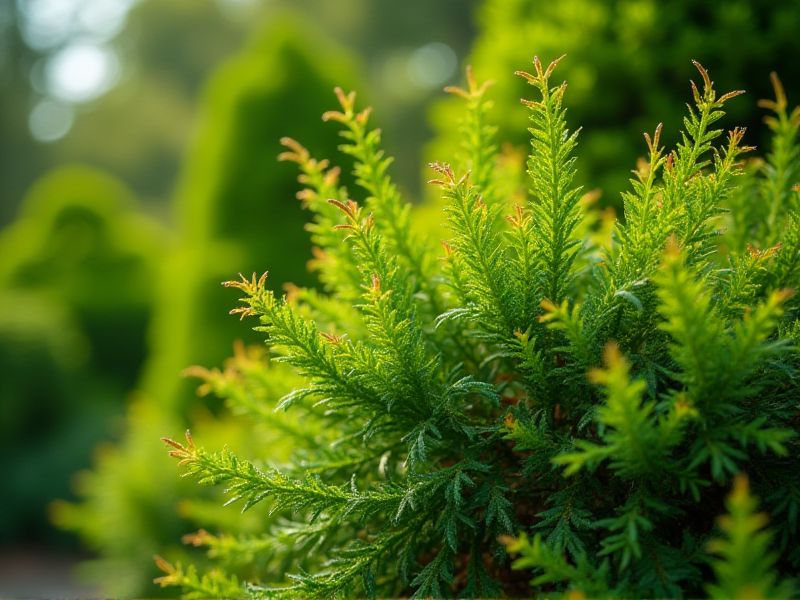
Evergreen plants that resist drought are essential for sustainable landscaping in arid regions. Species like the Juniperus chinensis, commonly known as Chinese juniper, thrive in dry climates, offering year-round greenery. The drought-tolerant Agave Americana, or century plant, features striking rosettes and requires minimal watering. Native plants such as the Eucalyptus species, particularly Eucalyptus globulus, provide both aesthetic appeal and low water usage. Incorporating these resilient plants into your garden not only conserves water but also supports local ecosystems.
List of some Evergreen plants that resist drought
- Olive Tree (Olea europaea)
- Lavender (Lavandula angustifolia)
- Rosemary (Rosmarinus officinalis)
- Oleander (Nerium oleander)
- Sage (Salvia officinalis)
- Juniper (Juniperus chinensis)
- Agave (Agave americana)
- Yucca (Yucca filamentosa)
- Bottlebrush (Callistemon citrinus)
- Pineapple Guava (Feijoa sellowiana)
Important things about Evergreen plants that resist drought
Drought Tolerance
Evergreen plants such as Juniper, Boxwood, and Pine species exhibit remarkable drought tolerance, making them ideal for water-wise landscaping. These plants possess needle-like leaves or thick foliage that minimize water loss, allowing them to thrive even in arid conditions. Incorporating drought-resistant evergreens in your garden not only conserves water but also adds year-round beauty and structure to your landscape. Additionally, their deep root systems help them access moisture from deeper soil layers, ensuring their survival during prolonged dry periods.
Adaptable Root Systems
Evergreen plants, such as pines, spruces, and holly, possess highly adaptable root systems that allow them to thrive in arid conditions. These root systems often extend deep into the soil, facilitating access to moisture during dry spells while also stabilizing the plant against strong winds. The waxy needles of evergreen species reduce water loss through transpiration, making them resilient in drought-prone regions. By selecting evergreens with robust root systems for your landscape, you can create a sustainable garden that withstands water scarcity while providing year-round greenery.
Water Conservation Strategies
Evergreen plants, such as junipers and pines, play a crucial role in water conservation due to their ability to withstand prolonged dry periods. These resilient species possess needle-like leaves that reduce water loss through transpiration, making them ideal for arid environments. When landscaping with drought-resistant evergreens, you enhance your garden's sustainability while minimizing water usage. Selecting native varieties further promotes local biodiversity and supports ecosystems, offering both functional and aesthetic benefits.
Needle-Like Leaves
Evergreen plants, such as pines and junipers, feature needle-like leaves specifically adapted to endure drought conditions. These narrow leaves reduce surface area, minimizing water loss through transpiration while retaining moisture. The waxy coatings on the needles further enhance their ability to withstand arid environments by creating a barrier against harsh sunlight and evaporation. By choosing needle-leaved evergreens for your landscape, you can enjoy year-round greenery while benefiting from their resilience to drought.
Seasonal Growth Cycles
Evergreen plants, such as Junipers, Hollies, and Pines, maintain their foliage year-round, making them ideal for landscapes in drought-prone regions. These resilient species have adapted to conserve water through needle-like leaves that reduce surface area and minimize moisture loss. Their deep-root systems allow them to access water stored in the soil, enabling them to thrive even during prolonged dry spells. Incorporating evergreen plants into your garden not only ensures year-round greenery, but also supports local ecosystems by providing shelter and food for wildlife throughout changing seasons.
Soil Type Preferences
Evergreen plants that resist drought thrive best in well-draining soils, often prefer sandy or loamy substrates that prevent water retention while maintaining some moisture. These plants, such as Junipers and Holly, often adapt to poor soil conditions, showcasing their resilience and ability to extract nutrients efficiently. Amending soil with organic materials can further enhance its structure, promoting root health and overall plant vigor. If you decide to cultivate drought-resistant evergreens, consider testing your soil type to ensure it meets these plants' unique needs.
Mulching Benefits
Mulching around evergreen plants significantly enhances their drought resistance by conserving soil moisture and regulating temperature. Organic mulch, such as wood chips or shredded leaves, slowly decomposes to enrich the soil with nutrients while suppressing weed growth that competes for water. Applying a thick layer of mulch also protects the root system from extreme temperature fluctuations, ensuring your evergreens remain healthy. This simple landscaping technique not only promotes the longevity of your plants but also optimizes water usage during dry periods.
Pest And Disease Resistance
Evergreen plants, known for their year-round foliage, often exhibit remarkable resistance to pests and diseases, making them ideal for resilient gardens. Species such as Juniper and Holly not only thrive in drought conditions but also show natural resilience against common threats like aphids and fungal infections. By choosing these robust evergreens, you can ensure a vibrant landscape that requires minimal maintenance while withstanding harsh environmental factors. Incorporating such plants into your garden design can significantly enhance biodiversity, as their presence supports beneficial insects and promotes a healthier ecosystem.
Native Species Advantages
Evergreen plants that resist drought are crucial native species in ecosystems, as they provide year-round greenery and habitat for wildlife. These plants have adapted to arid conditions through deep root systems and waxy leaves that minimize water loss, making them resilient in dry climates. By incorporating drought-resistant evergreens into your landscape, you can conserve water and support local biodiversity, promoting a healthy environment. Their ability to thrive in challenging conditions not only enhances the aesthetic appeal of your garden but also contributes to soil stability and erosion control.
Maintenance Requirements
Evergreen plants, such as Junipers, Boxwoods, and Hollys, thrive in low-water conditions, making them ideal for drought-prone gardens. Regular pruning is essential to maintain their shape and promote healthy growth, but it should be done cautiously to avoid damaging the plants. Mulching around the base of these evergreens helps retain moisture and suppress weeds, enhancing their resilience to drought. Consider using drip irrigation during prolonged dry spells to ensure your evergreens receive adequate hydration without overwatering.
